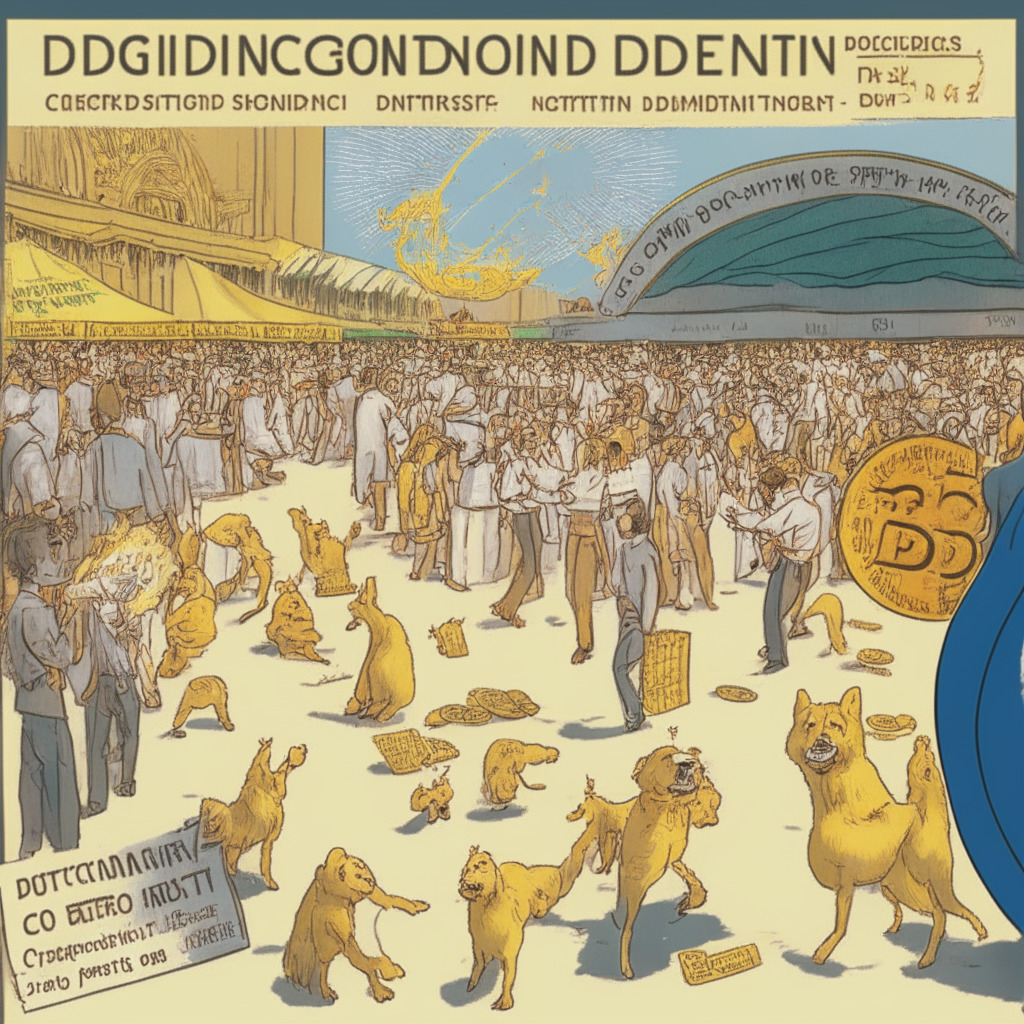As Dogecoin reached a new all-time high of 719,000 daily transactions on Tuesday, the question arises whether this surge is here to stay or simply a passing fad. The recent spike, exceeding even BTC‘s 566,000 daily transactions, has been attributed to the launch of their new DRC-20 standard. This development allows for the creation of meme coins on the Bitcoin network, with users scrambling to inscribe tokens into “shibes,” the smallest denomination of dogecoins, and tracking them throughout the system.
Dogecoin users have capitalized on the architecture enabled by Ordinals and created “Doginals.” These tokens bear a striking resemblance to NFTs, driving a significant increase in transactions on the blockchain – not dissimilar to the recent spike in transactions on the Bitcoin network. The DRC-20 standard shares similarities with Bitcoin’s BRC-20, allowing for inclusion of arbitrary and non-financial data in blocks.
However, despite the excitement surrounding Doginals, Dogecoin core developer Patrick Lodder seems to believe it may be short-lived. Lodder asserts that without sufficient thought given to this development, it is unlikely to become a key feature. He alludes to the “sustained and growing pressure on Dogecoin” as a factor that might lead to the quick demise of this new token craze.
Lodder adds that the main risk of this trend stems from “under-engineering,” stating he has not yet found a way to program these tokens with actual functionality in a trustless manner, akin to the well-established ERC-20 tokens. This sentiment raises concerns about the long-term viability and potential of the Doginal.
Dogecoin has traditionally seen stable daily transaction volumes at around 20,000, but recent data reveals extreme volatility over the past week. Shortly following the DRC-20 standard rollout, transaction volumes exceeded 450,000 on May 10th. A sharp drop ensued, only for volumes to climb again up to over 700,000 transactions yesterday – a total surpassing even Bitcoin.
In conclusion, although Dogecoin’s latest
Source: Decrypt




